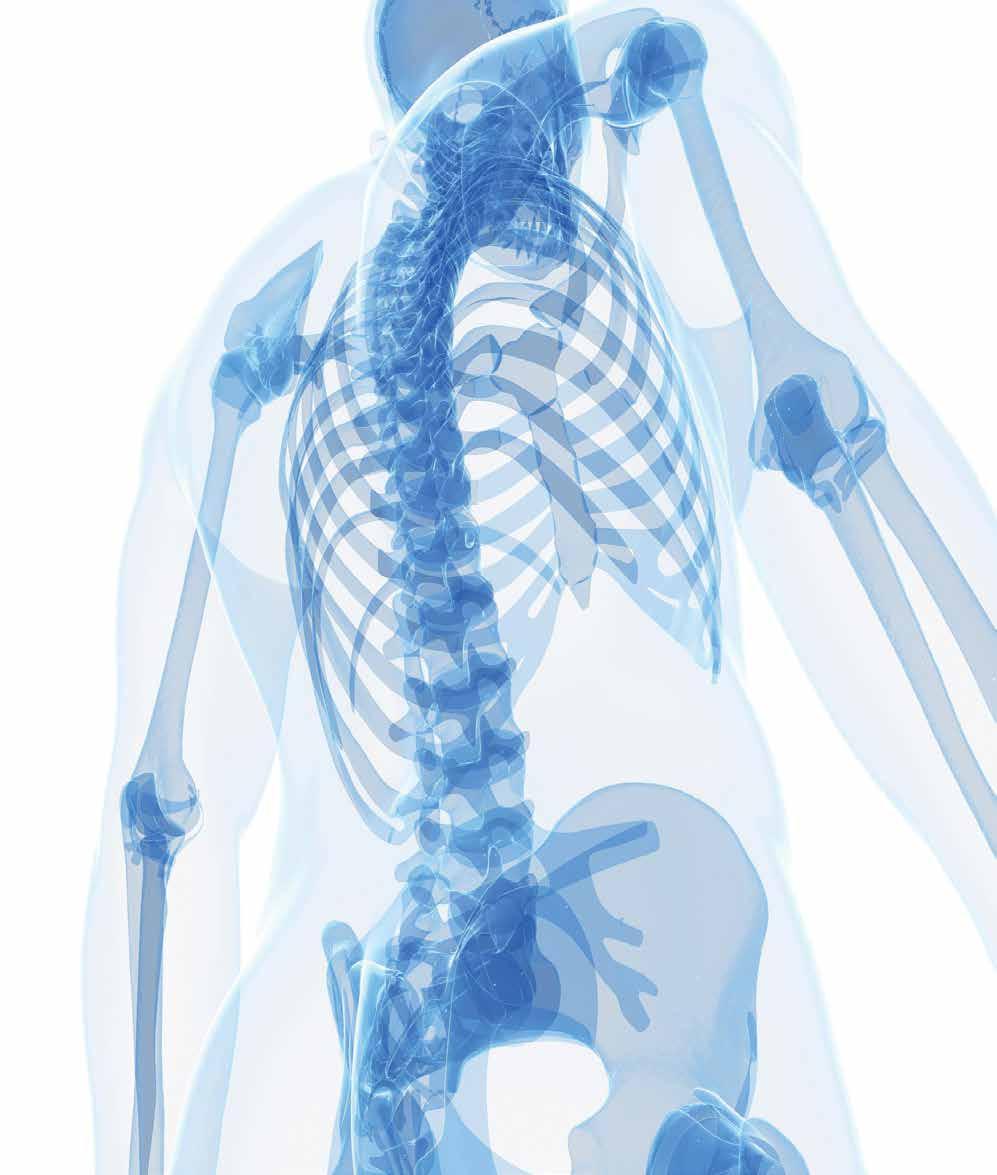DENTON COUNTY




Texas Health Flower Mound Weight Loss Center o ers comprehensive weight loss programs complete with diagnostic, surgical and non-surgical options designed to promote a full and healthy life.
Our bariatric team consists of board certified bariatric surgeons, experienced bariatric practitioners, nurses, dietitians and coordinators.
A dedicated weight loss specialist will be with you each step of your experience - from your initial appointment, through diagnosis, treatment, after care and follow-up maintenance appointments.
For more information or to schedule a consultation, please call 469-322-7073 or visit the Center’s website at TexasHealthFlowerMound.com/weight-loss-center






Total
Total
Partial


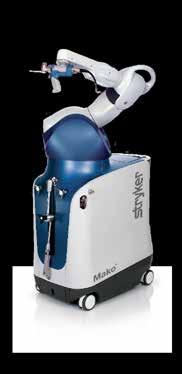

Our world has changed. Humanity is facing extraordinarily challenges in the fight against COVID-19. The virus has impacted every aspect of our lives and changed our community fundamentally.
Local businesses are trying to adapt, reinvent and find their way, while conflicting information swirls as how best to proceed during these uncertain times. One thing appears to be clear, if we are to move forward, we all need to do a part in slowing the spread of the virus.
With that in mind, LIVING WELL is joining the cacophony of voices in the community urging everyone to wear a mask in public spaces to safeguard yourself and others from potential exposure to COVID-19. By doing so, you’re helping slow the spread of the virus to hopefully protect others, while helping the efforts of local businesses to continue serving the area.
On the subject of serving the area, the local businesses featured on our pages are working to serve you during these challenging times. As always, we thank them for providing valuable content. For instance, in this issue, you’ll find informative articles on how to avoid accidental poisoning and dealing with ADD, along with a slew of other timely tidbits on a host of other noteworthy topics.
Now, more than ever, we implore you to support local, including the area businesses you see inside. The pandemic has brought our local economy––and many of the advertisers who support this magazine––to a near standstill. The people behind these businesses are not only leaders in their respective fields, they live in this community and care about it. Please consider utilizing their valuable services.
Sincerely,
Sam and Spring Houston
PRESIDENT & CEO
Sam Houston
VICE PRESIDENT & CFO
Spring Houston
FEATURE WRITER, COPY EDITOR AND SOCIAL MEDIA DIRECTOR
Sondra Barr
ART DIRECTOR, LAYOUT, PRODUCTION & WEBSITE DESIGN
Lewis Schucart
ADMINISTRATION AND ACCOUNTS MANAGEMENT
Jennifer Beavers
ADVERTISING/SALES
Texas | Denton County, Dallas County, Collin County
WRITE TO US. Tell us who you would like to see featured on the cover, or what subjects you would like covered in upcoming editions of LIVING WELL Magazine at info@livingwellmag.com.
SUBSCRIPTIONS/CUSTOMER INQUIRIES
Houstons of Dallas Publishing, Inc. 102 E. Broadway, #901 Prosper, TX 75078
www.LivingWellmag.com
Phone: 214-507-1000 Fax: 855-248-2132
LIVING WELL Magazine is a source for quality educational articles on living a healthy, vibrant life. Our focus is on connecting our readers with the latest information on a host of topics relevant to their evolving life. From cutting edge medical news and procedures to top-tier financial, legal and lifestyle information. Connecting readers to leading medical and business professionals in their community in Texas and Oklahoma.
'LIKE US' FACEBOOK.COM/LIVINGWELLMAG 'FOLLOW US' @LIVINGWELLMAGS
Texas & Oklahoma | Texoma 'FIND US' INSTAGRAM.COM/LIVINGWELLMAGS
All advertisements in this Magazine are placed by third parties. We do not control or endorse either the advertisements or their content. Further, we do not manufacture, sell, distribute or provide any of the goods or services advertised herein. We hereby expressly disclaim any liability with respect to the information or goods and services contained herein. We further disclaim any and all warranties or representations, express or implied, with respect to such information, goods or services, including any warranty of merchantability or fitness for a particular purpose (it being understood that we do not acknowledge that any such warranty exists). We are not liable or responsible for any loss, injury, damage, or harm that you may suffer as a result of the information contained in any advertisement or goods or services contained herein. “We” refers to the name of this Magazine, and all versions of Living Well Magazine, Senior Magazine, as well as Houstons of Dallas Publishing, Inc.



Dear Olivia,
I am nervous having anyone come into our home during the current health environment and I suspect it may be this way for a while. How do we know when it is safe to use in-home care of any kind right now, especially hospice?
~How Can We Ensure Safety
Dear How Can We Ensure Safety,
All patients and families should require anyone coming into their home is screened properly to ensure you are provided the safest care possible in such a tumultuous time. The CDC has issued clear guidance on how to screen both health care personnel and patients prior to providing any care. Patients and families/caregivers should be asked screening questions prior to visits so health care workers wear the appropriate personal protective equipment (PPE) for the situation. This may include a mask, gloves, gown, shoe covers and face shield or goggles and is worn to ensure the safety of your loved one and the health care worker.
Screening questions:
1. Has anyone engaged in international travel within the last 14 days to countries with sustained community transmission?
2. Are there any signs or symptoms of a respiratory infection, such as a fever, cough, and sore throat?

Olivia is a leading voice in health care and senior services and the Chief Nursing Officer of VNA Texas.
3. In the last 14 days, has patient had contact with someone with or under investigation for COVID19, or are they ill with respiratory illness?
4. Does the patient reside in a community where community-based spread of COVID-19 is occurring?
It is also essential to ensure the health care workers are cleared before making a visit to your home. The CDC approved survey process for these workers is as follows:
1. Health care providers and volunteers who have symptoms of a respiratory infection should not report to work.
2. Anyone who develops symptoms of a respiratory infection while on the job should immediately stop work, put on a face mask, and self-isolate at home.
3. Health care workers should take their temperature twice a day and stay home with any abnormal temperature.
4. It is always appropriate to ask the health care worker to put on a mask prior to entering your home.
Strictly following these procedures will ensure that the community is preventing the spread of COVID-19 and necessary at-home care can be provided.

VNA Hospice Care focuses on living life to its fullest and treating you with the dignity and respect you deserve. As a nonprofit, our bottom line is patient support and care provided by our highly qualified staff.
Hospice & Palliative Care
vnatexas.org
Following the diagnosis of a life-limiting illness, patients and their loved ones have many questions about the best course of action. VNA Care Choices provides supportive care services in the home while continuing treatment with your current physician.
To schedule your free in-home informational visit please call (214) 535-2615 or email gethelp@vnatexas.org For volunteer opportunities please call (214) 689-2271 or email volunteer@vnatexas.org

Your joints are our thing. We are the board-certified, fellowship-trained joint specialists of Texas Health Physicians Group. Armed with decades of experience in breakthrough techniques, we can assess your pain and develop a care plan that’s right for you. Whether you require full joint replacement or treatment that doesn’t require surgery, like oral medication, injections or physical therapy, we have one goal—getting you back to doing what you love, pain-free. And, as always, we have protocols in place designed around your safety. To learn more, go to TexasHealth.org/THPG-Safe.
Tom Selleck is no one-hit wonder. His enduring and much beloved leading man presence on television screens has spanned over four decades.
Larger-than-life, the 6 foot 4 star strikes a commanding, no-nonsense presence. Mix that with a rancher’s work ethic, more than a dash of old school charm, and a rugged visage that only gets better with age, and you have the key to Selleck’s lasting appeal.
It’s this reliable everyman persona that permeates his two most enduring starring roles, most recently as Frank Reagan, the New York police commissioner in the long-running Blue Bloods, which wrapped up its 10th season in May, and in the 80s smash hit Magnum, P.I.
Perhaps it’s no surprise that both roles encompass a strong code of ethics, something that Selleck, 75, embraces in his private life. Rather than take his prolonged success for granted, he’s nurtured it at arm’s length, while prioritizing his family, their 65-acre California ranch, and the causes nearest his heart.
“I’m a fairly private person,” he told People Magazine’s Aili Nahas this year. “And I’ve always treasured the balance between work and time with my family. It’s always about them.”
When Magnum, P.I. went on-air on Dec. 11, 1980, Selleck was a relative unknown. He had gotten into acting while a student

and basketball player at the University of Southern California. After appearing in some commercials and on The Dating Game twice (surprisingly, he didn’t get the girl), 20th Century Fox tapped him for a $35-a-week paycheck in their selective “New Talent” program, according to Parade
A short while later, the military called Selleck up for his Vietnam commitment. He didn’t balk and signed on for a six-year commitment. “I am a veteran, I am proud of it. I was a sergeant in the U.S. Army infantry, National Guard, Vietnam era,” he’s said. “We’re all brothers and sisters in that sense.”
When Selleck’s service came to an end, he returned to California ready to start where he left off. According to impactingourfuture.com, after six months of active duty, there was a uniform that Selleck kept in his car so he’d be ready to serve at a moment’s notice. “It wasn’t the best thing for acting, especially when you had to
The luckiest thing that happened was that I didn’t get a real job until I was 35.

get a military haircut, and no one was wearing their hair that way. You looked a little geeky for most parts,” he recalled. Yet, parts he earned, in soaps, forgettable movies, and pilots that didn’t sell.
At 35, he found himself in Hawaii to take on yet another TV pilot, but this show was different. The day after Magnum, P.I. premiered, Selleck was a star. The private-eye series depicted Selleck as Thomas Magnum, a Vietnam vet working as a private investigator in Honolulu, who operated out of the sprawling estate of a famous author who was never home. Viewers couldn’t get enough of Selleck, the hot cars, stunning women, and luxe Hawaiian setting.
“The key to Magnum was that he woke up one day at 33 and realized
Continued, page 10
Continued, from page 9
he had never been 23,” said Selleck to writer Mary McNamara for the Los Angeles Times in 2011.
What appeared to many like overnight success for Selleck was a long time in the making. “The luckiest thing that happened was that I didn’t get a real job until I was 35,” said Selleck to AARP in 2015. During the years of ho hum roles, he sought out acting classes to hone his craft.

“When I was 25, I looked 35 but sounded 15. There are a lot of very good actors who make it as younger leading men but don’t graduate––because the audience won’t accept them as grown up.”
Accept Selleck as a grown up, the public did. At the peak of his Magnum popularity, Selleck was earning well over $1 million annually, an astronomical sum in the 80s. Meanwhile, he made Oahu the destination du jour of that decade.
According to a 1985 Chicago Tribune article by Ron Miller, “One can’t land on Oahu without knowing that this is Tom Selleck’s island. He grins from posters everywhere––in the airport souvenir shops, in the booths at fast-food joints, on the sides of hot-dog stands. The tourist brochures given away in boxes along Waikiki Beach rank him up there with King Kamehameha.”
At the height of the show’s popularity and his fame, Selleck abruptly stepped away from the spotlight and retreated to his ranch in Hidden Valley, California, with his wife and daughter. He wanted a quieter life away from the prying eyes of the media and obsessive fans.
“I knew intellectually what it would mean in terms of being a public person, but until you’ve lived it, there’s no way to understand it. I had a feeling of, ‘I don’t think I’m cut out for this,’” he said.
ABOVE: Selleck is best known as portraying Hawaiibased private investigator Thomas Magnum on the 1980’s television show Magnum, P.I.
According to the People interview, Selleck’s self-imposed hiatus from Hollywood was extended by the disappointing scripts that would come his way. “I put up with the articles that said, ‘he’s disappeared, he’s done.’ And you do get done, I’m well aware of that. It was a big lull, but it put a lot of things in perspective.”
• He auditioned with Steven Spielberg and George Lucas for the lead in Indiana Jones
• He had a hip replacement in 2013. To recover, he built a bridge on his ranch as an unconventional form of physical therapy
• He sometimes gets saluted by real NYPD officers when walking down the street
• He’s a veteran of the California Army National Guard
• One of his earliest roles was on The Young and the Restless
• He earned an Emmy nomination for his role on Friends
He spent the ensuing time tending to his ranch and horses, while he and his wife raised their daughter, Hannah.
His wife, actress Jillie Mack, whom he’d met in 1984 after spying her backstage after her performance in Andrew Lloyd Webber’s musical Cats, initially wasn’t keen on moving the family to a ranch. But, according the 2015 AARP article, she views it differently in hindsight. “It’s the best place to raise a child,” she said. “It was such the wisdom of Tom. He knew he needed to buy back his anonymity, to replenish the soul.”
The wide open spaces also helped to strengthen the pair’s happy union, which is 33 years strong. “There’s a lot of yin and yang in us. I’m kind of quiet. She’s got this joie de vivre. I don’t know what our secret is, but I’m happy,” he said. After recharging his star wattage, Selleck was back for more success. He starred in the 1987 movie 3 Men and a Baby and its sequel, 3 Men and a

Little Lady. He also had a recurring role as Courteney Cox’s older love interest on Friends and he’s also starred in the popular Jesse Stone series television movies.


Yet, it’s his character in Blue Bloods that has provided Selleck another act to his lengthly career. The role of Police Commissioner Frank Reagan is tailor made for Selleck’s unique brand of no nonsense reliability. Reagan is a man who commands respect at both City Hall and the Sunday night dinner table, where he anchors a three-generation NYPD family, according to Parade. The show premiered in 2010 and has consistently drawn in over 11 million viewers per episode. It was recently announced the show will be back for the 2020/2021 season.

“The show has lasted because the characters have been allowed to grow and change. The potential is limitless in my opinion,” he told TV Insider. “Everybody’s very much aware that this is maybe a once in a lifetime opportunity––a show that’s found its way and is welcomed by an audience. I’m ready to go back when it’s okay to start again.”
While we can’t wait for Selleck to be back, he’s been quarantining with his wife on their ranch. A place that he’s said works magic on his body and mind. “This ranch is a great counterpoint to the acting business, which is an abstraction,” he told AARP. “You do something, it’s up on a piece of film, and everybody argues whether it is good or bad. You dig a hole and plant an oak tree––and I’ve probably planted a thousand of them––it’s real. It’s there and you can watch it grow. It’s a lot different than being famous, and it keeps me sane.”
Bloods just wrapped up its tenth season but the popular show shows no signs of slowing down.

• Onsite Diabetic Shoe Store with Dynamic Arc Balance Assessment to help pinpoint the specific area(s) of functional balance lost.
• Onsite Nail Treatment Center with full spa services and open to the public.
• We have podiatric specialists that treat chronic pain and peripheral nerve problems that affect the foot and ankle.
• MLS Laser Therapy for pain and inflammation and the Hyperion 1530 laser for treatment of fungal nails.
Achilles Tendon
Ankle Instability
Ankle Sprains
Foot and Ankle Injuries
Arthritic Foot & Ankle Care
Athletes Foot
Bunions
Calluses


Children’s Feet Corns
Crush Injuries
Diabetic Foot Care
Flat Feet
Fungal Toenails
Geriatric Foot Care
Hammertoes

Heel Spurs
Ingrown Toenails
Injuries
Neuroma
Plantar Fasciitis
Warts
Wounds

Adiabetic foot ulcer is an open sore or wound that occurs in 15 percent of patients with diabetes and is commonly located on the bottom of the foot. Of those who develop a foot ulcer, 6 percent will be hospitalized due to infection or other ulcer-related complication.
Diabetes is the leading cause of non-traumatic lower extremity amputations in the U.S., and approximately 14 to 24 percent of patients with diabetes who develop a foot ulcer will require an amputation. Foot ulceration precedes 85 percent of diabetes-related amputations.
Anyone who has diabetes can develop a foot ulcer. People who use insulin are at higher risk of developing a foot ulcer, as are patients with diabetes-related kidney, eye, and heart disease. Being overweight and using alcohol and tobacco also play a role in the development of foot ulcers.
Ulcers form due to a combination of factors, such as lack of feeling in the foot, poor circulation, foot deformities, irritation, and trauma, as well as duration of diabetes. Patients who have diabetes for many years can develop neuropathy, a reduced or complete lack of ability to feel pain in the feet due to nerve damage caused by elevated blood glucose levels over time. Your podiatrist can test feet for neuropathy with a simple, painless tool called a monofilament.
Vascular disease can complicate a foot ulcer, reducing the body’s ability to heal and increasing the risk for an infection. Elevations in blood glucose can reduce the body’s ability to fight off a potential

infection and also slow healing.
Because many people who develop foot ulcers have lost the ability to feel pain, pain is not a common symptom. The first thing you may notice is some drainage on your socks. Redness and swelling may also be associated with the ulceration and, if it has progressed, odor may be present.
Once an ulcer is noticed, seek podiatric medical care immediately. The primary goal in the treatment of foot ulcers is to obtain healing as soon as possible.
For optimum healing, ulcers, especially those on the bottom of the foot, must be “off-loaded.” You may be asked to wear special footgear, or a brace, specialized castings, or use a wheelchair or crutches.
We know that wounds and ulcers heal faster if they are kept covered and moist. The use of full-strength betadine, hydrogen peroxide, whirlpools, and soaking are not recommended, as these practices could lead to complications.
Wound management includes the use of dressings and topically-applied medications. Products range from normal saline to growth factors, ulcer dressings, and skin substitutes.
For a wound to heal there must be adequate circulation to the ulcerated area. Your podiatrist can determine circulation levels.
Tightly controlling blood glucose is important during the treatment of a diabetic foot ulcer. Working closely with a medical doctor or endocrinologist to control blood glucose will enhance healing and reduce the risk of complications.
A majority of non-infected foot ulcers are treated without surgery; however, if this treatment method fails, surgical management may be appropriate. Examples of surgical care to remove pressure on the affected area include shaving or excision of bone(s) and the correction of various deformities, such as hammertoes, bunions, or bony “bumps.”
The best way to treat a diabetic foot ulcer is to prevent its development in the first place. Recommended guidelines include seeing a podiatrist on a regular basis.
You are at high risk if you have or do the following:
• Neuropathy
• Poor circulation
• A foot deformity (e.g., bunion, hammer toe)
• Wear inappropriate shoes
• Uncontrolled blood sugar
• History of previous foot ulceration
Reducing smoking, drinking alcohol, high cholesterol, and elevated blood glucose are important in prevention and treatment of a diabetic foot ulcer. Wearing the appropriate shoes and socks will go a long way in reducing risks.
Learning how to check your feet is crucial so that you can find a potential problem. Inspect your feet every day. Each time you visit a health-care provider, remove your shoes and socks so your feet can be examined. Any problems that are discovered should be reported to your podiatrist as soon as possible.
If you’re experiencing foot or ankle problems, Complete Foot and Ankle Care invites you to make an appointment with us by calling 940-300-3054. www.completefootandanklecare.com
Dr. Damien Dauphinée
Eating right and exercising are great ways to stave off the inevitable signs of aging.
But even if you’re devoted to wellness, over time your skin loses elasticity, bone and tissue deteriorate and hereditary factors become more pronounced.
North Texas residents can count themselves fortunate that nationally-known facial plastic surgeon Dr. Gregory D. Roberts is a short drive away. He’s refined a face lift technique, known as the “scarless” face lift, which allows patients to recover from surgery with virtually no visible scarring. The “scarless” face lift involves a series of surgical methods and meticulous precision that can help restore more natural, youthful facial features with virtually imperceptible signs of surgical intervention.
“My one guiding principle is that your cosmetic surgery looks natural,” said Dr. Roberts. “You should look refreshed and wellrested, never pulled.” Dr. Roberts takes the time necessary to meticulously place and close incisions,
ensuring that his patients’ incisions are virtually invisible, as well as helping to minimize bruising and quicken the healing process. Dr. Roberts and his staff are thorough and attentive before and after surgery, making sure each patient understands the procedure and recovery time.
Many of Dr. Roberts’ patients also find pleasing results with a non-surgical face lift alternative known as a Liquid Face Lift. Revolumizing the face with a Liquid Face Lift can be done alone or in conjunction with a face lift to restore natural, youthful volume and contours. Dr. Roberts appreciates that each patient is a unique individual with specific needs and expectations. “I like to spend time with each patient discussing options and determining what will produce the best and most consistent results to fit the patient’s goals and desires,” he said.
If your goal is smoother, clearer skin tone and texture, skin resurfacing with advanced lasers such as D.O.T. or Fraxel® can be a tremendous help, as well. For patients seeking more comprehensive facial

rejuvenation, Dr. Roberts might recommend an R-Lift, which integrates a “scarless” face lift (or other cosmetic surgery), as well as a liquid face lift and fractional laser resurfacing. “An R-Lift essentially blends the three R’s of facial rejuvenation,” said Dr. Roberts, “Repositioning (drooping skin), Revolumizing (flattened facial features) and Repairing (sun damaged skin).”
“There’s a tremendous amount of satisfaction that comes along with my work,” he said. “Seeing patients get positive results from their procedure, as well as seeing their renewed confidence, and then hearing the reaction of others in their lives is very fulfilling.”
Dr. Roberts’ procedures are performed at an AAAASF certified facility near George Bush Tollway and Preston in Plano, Texas. Read more here about what his patients say about him. View more beforeand-after photos and review additional information at RobertsCosmeticSurgery.com.
To schedule a free consultation, call 972-608-0000.



At Roberts Cosmetic Surgery Center, Dr. Roberts specializes in facial cosmetic medical procedures, including the “scarless” face lift, endoscopic brow lift, blepharoplasty, rhinoplasty, otoplasty, chin and lip implants. For over 14 years, Dr. Roberts has focused his surgical specialty on the face, but he also performs laser liposuction procedures with the dual wavelength Slimlipo®, as well as other minimally invasive cosmetic medical procedures, such as BOTOX® and dermal filler procedures. Dr. Roberts is certified by both the American Board of Facial Plastic and Reconstructive Surgery as well as the American Board of Otolaryngology | Head and Neck Surgery. Dr. Roberts personally performs all surgical procedures, liposuction procedures, BOTOX® and filler procedures. Laser and resurfacing procedures at Roberts Cosmetic Surgery are performed by a certified and licensed anesthetician, while his support staff endeavors to provide optimal patient care.


Dr. Roberts’ patients love their results! KM didn’t fully embrace the aging process and sought help to improve her appearance. During her consultation Dr. Roberts recommended upper and lower blepharoplasty (eye lifts) as well as a mini face lift. “I inherited drooping eyes from my dad, sagging jowls from my mother. But Dr. Roberts has completely changed that for me. Now I get comments even from strangers about how good my skin looks. Only my close friends know what I’ve had done, but I feel dramatically different. It’s helped my confidence and I’m definitely more comfortable when I’m face-to-face with people.”

Book your Mini Face Lift with Dr. Roberts before August 30, 2020, and save 25 percent. (Have your procedure anytime in 2020.) Natural results, hidden incisions and limited downtime— why not call 972-608-0000 to book your free consultation today?
* Incl. Free O.R. ($1,600 value); Excl. Anesthesia

At 51, JT worked to stay in shape but couldn’t stop the natural signs of aging. The sagging in her neck and jowl area started to bother her so much she no longer wore her hair off her face. “I feel young and wanted to look more youthful,” she said. After a mini face lift, she’s thrilled with the results. “Not one person has said, ‘Did you have a face lift?’” she said. “But people do tell me how pretty my skin is. I didn’t want to overdo it or become obsessed with vanity, and what Dr. Roberts did is perfect. Everyone in his office was attentive, helpful and supportive. I’d definitely do it again.”
JR, 52, had a face lift, endoscopic brow lift and lower blepharoplasty performed in one procedure. “Before the surgery I looked tired and my jowl area and the skin around my mouth sagged,” she said. “Dr. Roberts spent a lot of time explaining everything and answering my questions. During my consultation, I saw a woman who’d had a face lift the day before, and you couldn’t see the incisions since they were in her hairline. After surgery, I was wearing a ponytail two weeks later and attended a work conference a week after that. No one could tell I’d just had surgery! To me, it’s so natural. I can’t say enough good things about Dr. Roberts and his staff.”

by August 30, 2020





Creating a Will and a solid estate plan is one of the most important things you can do for your loved ones. However, according to a recent survey, only four in ten American adults have a Will and less than that have powers of attorney in place. One of the things we hear most often when providing education about Wills and other legal documents is: “Why do I need an attorney? Can’t I just do this myself?” While we understand the desire to save money, we know that the do-ityourself approach can end up costing your loved ones more time and money in the long run, even in a “simple” estate.
Medical Power of Attorney are critical parts of long-term care planning, because they designate the person or persons who will be acting for you in the event you

The biggest obstacle to overcome when preparing a good estate plan, is ensuring that all of the necessary documents are included. In addition to a Will, everyone over the age of 18 needs the following legal documents in place to ensure maximum control and protection over their assets and their future:
• Will
• Durable Power of Attorney
• Medical Power of Attorney
• Authorization to Release Medical Information
• Directive to Physicians and Family or Surrogates (Living Will)
• Declaration of Guardian in the Event of Later Incapacity
These documents are vital to a well-rounded estate plan. This is particularly true for the documents designed to protect you during your lifetime. Although often overlooked, a Durable Power of Attorney and a
are unable to handle your own financial and health care decisions. Without these documents, no one, not even your parents, spouse, or adult children, is legally authorized to handle your finances or make medical decisions for you.
An experienced attorney who practices in this area of the law understands each of these documents thoroughly and how they should be developed to fit your particular circumstances, wishes, and family dynamics. As with any legal document, these documents should only be executed after great contemplation, discussion, and reflection. Each person and situation is unique and you should not rely on a generic form to guide these important decisions. Additionally, as your life situation changes, so should your estate planning documents. It is generally a good idea to have your documents reviewed by an attorney upon life-changing events, or every five years to ensure your estate plan still reflects your wishes and is consistent with your goals.
“But I don’t have any assets,” or “My creditors will take my estate,” or “I’m not old enough” are other reasons we hear when counseling the public on the importance of estate planning. The bottom line is everyone has an estate to plan for and protect. Everyone has at least one asset – a bank account, a car, maybe a house – even if its encumbered by debt. It doesn’t matter if you have one or one million assets, the necessity to have a well thought out, complete estate plan with all of the documents, is the same. Despite our better judgment, an 18-year old is the same kind of adult as an 80-year old, and although the estate plan maybe different, the importance of having legal documents in place is equal.
Advice on these documents, as well as other legal issues, such as eligibility for long-term care Medicaid benefits, should be provided by an attorney who works in this area on a daily basis. There is a reason that professionals like attorneys and doctors are licensed and specialized – they are providing important services, governed by certain standards, and they are required to obtain continual education in their areas of expertise. Such licensing is intended to provide protection to the public. That protection is lost, though, when unlicensed, and unauthorized, persons provide advice on the same matters.
Seek qualified professional advice and take the time to build relationships with people you trust to help you plan for your future. You are doing your family an invaluable service when you prepare and complete a plan before you need it.
Lori
Leu, Erin Peirce, and Lauren Olson are Elder Law attorneys with Leu & Peirce, PLLC and can be reached at 972-996-2540

Owner Damien Dauphinée, DPM, FACFAS, FAENS,FACCWS, CWS-P

Raafae M. Hussain, DPM

Co-Founder and Owner
Katina Butler

LOOKING FOR THE CURE IN YOUR PEDI? VISIT THE NAIL TREATMENT CENTER FOR THE HIGHEST STANDARDS IN SPA CARE.
Founded by board certified podiatrists in 2014, The Nail Treatment Center has served podiatry patients and the Greater Denton community by holding to 3 core values:
To be our clients’ best possible resource for foot and nail care products and services.
To provide a luxurious experience, marked by relaxation and quality service.
To offer the peace-of-mind that comes from high medical standards for safety & cleanliness.



Follow us:

We are a full-service nail spa with a comprehensive menu to meet your needs. Our pedicures range from basic to specialty custom focus on fungus/ dermatitis, calluses, severe dryness, and other issues. We also offer manicures, diabetic nail trimmings, nail art, locally made organic products, safer alternatives for stronger or acrylic nails (Gel, KeryFlex, NexGen, SNS), and much more.
MON-THURS 8AM-5PM FRI 8AM-2PM SAT Call Office for Hours
3319 UNICORN LAKE BLVD, STE 111 DENTON, TX | 940-300-3054, ext. 2015 NailTreatmentCenter.com info@NailTreatmentCenter.com
Some experiences are even better when shared! Double book your appointment for “we time” with a friend, child or special someone for well-deserved pampering, complete with a featured complimentary service. We accommodate appointment requests outside of normal business hours based on availability. Call us for more information.
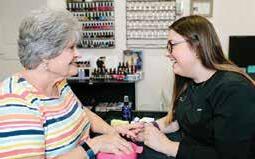






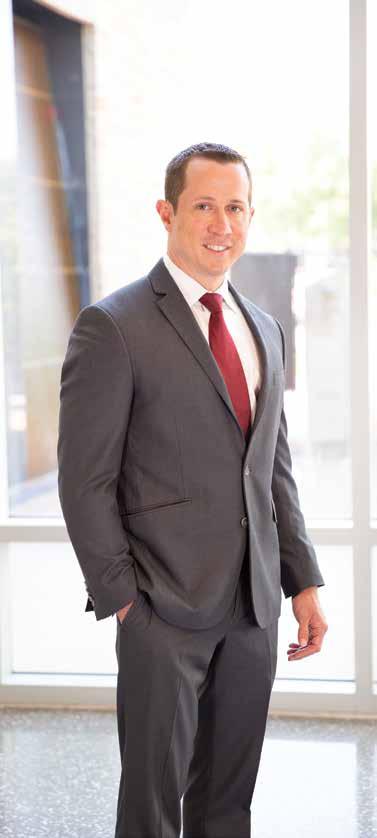
Dr. Chambers is an orthopaedic surgeon at Dallas Orthopaedic Joint Institute who specializes in joint replacement surgery. He received extensive training in joint replacement surgery during his fellowship at Harvard Medical School / Massachusetts General Hospital, which was voted as the top hospital in the United States. Dr. Chambers has implemented the techniques learned at Harvard Medical School into his own practice and offers minimally invasive total hip / knee replacement, partial knee replacement, revision surgery for malfunctioning, loose, and infected joint replacements, arthroscopic surgery of the hip and knee, and revision of failed and recalled metal-on-metal total hip replacement implants. Dr. Chambers focuses special attention on surgical techniques for rapid recovery after total joint replacement which allow his patients a more predictable and earlier return to home and an active lifestyle.
Dr. Chambers is pleased to offer the MAKOplasty Robotic-Arm Assisted partial/total knee and hip replacement. The MAKOplasty procedure is changing the way joint replacement surgeries are performed by providing each patient with a personalized surgical experience based on their specific diagnosis and unique anatomy using a CT-based 3D modeling. The robotic arm technology allows for extremely precise placement of hip/knee components with potentially less soft tissue injury than traditional joint replacement.
Dr. Chambers is a Texas native and grew up in Houston, Texas. He attended medical school at The University of Texas Medical Branch in Galveston, and completed residency at John Peter Smith Hospital in Fort Worth, Texas. He then completed a fellowship in joint replacement surgery at Harvard Medical School. In his free time, Dr. Chambers enjoys traveling with his wife, Christine, and spending time with friends and family. He is an avid sailor and enjoys participating in sailing races on the local lakes in the Dallas/Fort Worth area.
Dr. Chambers practices at Methodist Dallas, Charlton, and Richardson Hospitals. To schedule an appointment please call or text 469-747-0382.

221 W. Colorado Blvd., Pav II, Suite 431
Dallas, Texas 75208 METHODIST
3430 W. Wheatland Rd., POB 1, Suite 216
Dallas, Texas 75237
469-747-0382
469-405-0135 FAX dallasorthojoint.com
Recognized by U.S. News and World Report as Best Nursing Home and Short-Term Rehabilitation Facility.



• Private and semi-private studios, some with kitchen elements and/or Frenchdoor courtyard patios
• Flat-Screen televisions
• 32 channels of satellite television service
• Wi-Fi internet access
• Electric beds for easy comfort adjustments
• Living room with fireplace and player piano
• Library with computer stations and complimentary internet access
• Chapel
• Neighborhood cafes with complimentary premium beverages and snacks
• Restaurant-Style dining room
• Beauty/barber shop with full-time beautician
• Activity program with community outings
• Sedan and van for resident transportation


• Around-the-clock skilled nursing
• Physical, Occupational, and Speech Therapies
• Wound Management
• Intravenous Therapy
• Tracheotomy Care
• Physician Services
• Medication Administration
• Enteral/Parenteral Therapy
• X-Ray Services
• Laboratory Services




According to Sari Solden, in her book Women with Attention Deficit Disorder, “Almost all women find that life today is complex, upsetting or frustrating, but they are still able to meet most of [life’s] demands reasonably well…. For women with untreated Attention Deficit Disorder (ADD), however, the demands of daily life can be crippling. It cripples their self-esteem, their families, their lives, their work and their relationships.”
ADD, also known as Attention-Deficit Hyperactivity Disorder (AD/HD), affects between three and five percent of the population. However, adult ADD, especially as it appears in women, often goes unrecognized.
The symptoms of ADD are many. Some are more commonly seen in women and opposite the more recognized symptoms seen in men. This makes detection unlikely and diagnosis difficult. Each person’s experience with ADD is unique. While there is a multitude of characteristics, most women with the disorder don’t have every symptom. Instead, each woman has a mixture severe enough to impair some areas of life.
Disorganization is typical and often a severe problem for women struggling with ADD. They may be unable to organize their homes, offices, or lives. To outsiders, the disorganization isn’t always visible. That’s because women who lead professional lives may have assistants, secretaries, and cleaning services to assist them. Some ADD women have a partner who compensates for their organizational dysfunction, as well.
Other women with ADD find clutter and disorganization an incredible distraction. These distractions, coupled with
the responsibilities of everyday life, lead to mental disorganization. The disorganized brain struggles to store, weed out, and organize logically. For these women, being tidy and organized equals survival.
Hyperactivity vs. hypoactivity
Women with ADD can be at either end of the spectrum, either hyperactive or hypoactive (underactive). Hyperactive women may go at full speed until they crash from the overload. Family life can also suffer from a hyperactive mother. She may be unable to sit and play games or read to her children unless she finds the activities stimulating. Many women with ADD are at the other extreme. They’re hypoactive, unable to muster the energy to do much of anything. These women are often unable to keep up with life’s many demands. Maintaining a home, participating in family activities, staying in touch with friends, even holding down a job can be a significant challenge.
Inattention vs. hyperfocusing
The problem is women with ADD struggle with the inability to regulate attention. So it doesn’t mean they can never maintain attention. Instead, their ability to focus is based on interest and whether the activity is stimulating. Many women daydreamed through school when they were younger. Yet the subjects or activities they found fun, interesting, or exciting didn’t pose such a problem. Adult life with ADD is often the same.
Hyperfocusing, which is the opposite of inattention, also poses problems and can coexist with symptoms of inattention. While it may be challenging to focus on some things, a woman may hyperfocus on that which interests her and be unable to shift her attention. Hyperfocusing can last for hours, days, and longer and makes it difficult to break for important matters. Meals may be forgotten, and family
members can carry on conversations without being heard. So hyperfocusing puts a strain on the family. If a hyperfocused woman does manage to break away from what she’s engrossed in, she may wander aimlessly and forget what she’s doing.
Impatience and impulsivity
Standing in lines, sitting in waiting rooms, and being placed on hold for lengthy waits drives some women with ADD to the brink. So they may avoid these situations altogether. Women with ADD may be impatient either visibly or internally or act impulsively. Minor nuisances can cause significant agitation. Other women with this disorder can maintain their composure yet still feel anxious and annoyed.
Women with ADD may also be impatient about life and events. A woman may plan her whole education or entire life in one day and need for it to happen immediately. She goes into things full swing rather than stepby-step. As a result, women with ADD may have a change of heart after much investment of time or money or feeling spread too thin, with too many goals to achieve.
Impulsiveness is seen when women with this disorder act or speak without thinking. This often leads to trouble by spending impulsively or jumping into relationships and even marriage. Some struggle socially and interrupt conversations or blurt things out they later regret.
Mood
Mood swings, being overemotional, or easily frustrated is another problem. For some women, having ADD is like being on an emotional roller coaster. Extreme mood shifts sometimes lead to a misdiagnosis of bipolar disorder, though the two can coexist.
Women with ADD are frustrated by the slightest aggravations. A simple mistake seems a major ordeal and may result in anger, storming off, and dropping a task altogether. If interrupted in the midst of something, a woman may become irritable and annoyed. Depression, although not a symptom of ADD, often coexists or is a result of the debilitating disorder. Depression in the ADD woman may stem from a lack of self-worth because she’s
unable to hold down a job or adequately care for her family. It can also result from not achieving up to potential because of attention problems or the inability to stick with things. It also sometimes comes from feeling overwhelmed. This feeling can dominate the life of a woman with this disorder.
Continued, page 26

Continued from, page 25
Research indicates ADD is a neurobiological disorder with a strong genetic link. According to the nonprofit organization Children and Adults with Attention Deficit-Hyperactivity Disorder (CHADD), complications during pregnancy, labor, and delivery, exposure to nicotine or alcohol during fetal development, or several other environmental factors may also play a role in the development of ADD.
Studies show the incidence of ADD in men and women is nearly identical, says Kathleen Nadeau, Ph.D., co-author of Understanding Women with AD/HD. There are several common reasons women with ADD often go undiagnosed.
Doctors often diagnose the depression that accompanies ADD, but miss the ADD itself. Women, more often than men, have coexisting anxiety and depression, which must be treated as well.
Also, women who are more hyperactive, hyper talkative, and impulsive are sometimes misdiagnosed with bipolar disorder.
Many doctors still look for signs of ADD more typical of boys. Many doctors fail to understand that ADD symptoms in females often don’t appear until puberty or later because of hormonal fluctuations. When girls enter adolescence, during PMS, and as estrogen levels drop in perimenopause and menopause, the symptoms of ADD often worsen.
Also, girls tend to try harder in school, so their ADD patterns are often masked or overlooked by teachers.
Several treatments are available for ADD. The most effective is a prescription medication. There’s a multitude of stimulant and non-stimulant drugs available for treatment.
Behavioral therapy is also beneficial for both coming to terms with the lifelong disorder and to relieve negative coping behaviors. Coaching is also useful for learning new skills and strategies for structuring life. Because ADD is neurobiological, therapy and coaching work best in conjunction with medication.
Several ineffective treatments are on the market, as well. Suspect therapies, according to CHADD, include dietary plans such as the Feingold Diet and vitamin and mineral supplements. Other treatments that lack evidence include anti-motion-sickness medication, Candida yeast, EEG Biofeedback, Applied Kinesiology, also known as Neural Organization Technique, and Optometric Vision Training, to
name a few. Often, excessive claims are made about these treatments, citing a few favorable responses or studies that don’t hold up to scrutiny.
An accurate diagnosis and appropriate treatment are essential. Finding a qualified provider isn’t always easy because adult ADD, particularly as it affects women, isn’t always recognized. Before seeking a diagnosis, read some
Some of the symptoms commonly seen in women, partially taken from Attention Deficit Disorder in Adults by Dr. Lynn Weiss, are as follows:
• Difficulty completing tasks or following through on plans
• Difficulty shifting attention
• Excessively shifting from one activity to another
• Trouble concentrating on reading
• Impatience
• Frequent preoccupation in thoughts and not hearing when spoken to
• Difficulty sitting still or excessive fidgeting
• Sudden and unexpected mood swings
• Interrupting in conversations, speaking without considering consequences
• Hot-tempered
• Need for high stimulus
• Forgetfulness
• Low tolerance for frustration
• A tendency toward substance abuse
recommended books for a better understanding of the disorder and the diagnosis and treatment process. Also, compile a list of questions to ask your provider to ensure he has a clear understanding of the disorder and appropriate treatments. If you don’t feel comfortable with a physician’s responses, seek help elsewhere.








Richardson



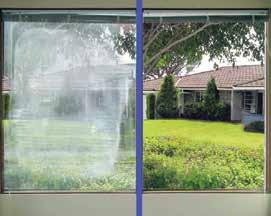
“You may find that your 2nd or 3rd opinion should have been your


Dr. Birenbaum founded the Arlington Cancer Treatment Center in 1981. He founded the Texas Hematology Center, PA in 1997 He is the founder, Medical Director, and CEO of Patients Comprehensive Cancer Center (2001) & McKinney Regional Cancer Center (2007). Dr. Birenbaum trained at The University of Texas M.D. Anderson Cancer Institute for 5 years, 3 years as a Hematology/Oncology fellow and 2 years as facility professor. His private practice in Hematology/ Oncology has been in the Dallas/Fort Worth area since 1979.
AREAS OF CLINICAL INTEREST:
• Gastrointestinal Tumors
• Melanoma, Sarcoma
•Breast Cancer
•Lymphoma
CREDENTIALED AT SEVERAL LOCAL HOSPITALS:
• Centennial Medical Center
• Medical Center of McKinney
• Methodist Richardson Medical Center
• Dallas Medical Center
• Specialty Hospital
•Kindred Hospital
PERSONAL INTERESTS:
•Born and raised in Dallas, TX
• Attended SMU (Southern Methodist University)
•Father of 2 sons
• Owns six dogs
• Loves traveling and golf
• Avid collector of arts and antiques
Dennis Birenbaum, MD and Dr. Wyszynski, MD, DO are M.D. Anderson trained hematologists/oncologists.
Dr. Wyszynski, MD, DO also trained at Fox Chase Cancer Center in Philadelphia, PA.
Dr. Wyszynski joins the Texas Hematology and Oncology Centers after many years of successful private medical practice in the Dallas/Fort Worth area. Dr. Wyszynski completed his internship and residency at John F. Kennedy Memorial Hospital in Stanford, New Jersey. He followed these with a number of Fellowships including one in Hematology/Oncology at the prestigious M.D. Anderson Cancer Center in Houston, TX, and two years at Fox Chase Cancer Center in Philadelphia, PA. Dr. Wysznski is well known for his quality of care and the personal interest he takes in his patients. He is very active in many professional societies and investigative trials.
BOARD CERTIFICATIONS:
• American Osteopathic Board of Internal Medicine: Hematology/ Oncology-Certified: 8/24/2007
• American Osteopathic Board of Internal Medicine
PROFESSIONAL SOCIETIES:
• American Osteopathic Association
• ASCO
•Texas Medical Association
•Dallas County Medical Association
CLINICAL CANCER INVESTIGATIVE TRIALS:
•Central Pennsylvania Oncology Group Protocal
•Eastern Cooperative Group
• Southwest Oncology Group
PERSONAL INTERESTS:
•Married and father of 2 children
• Enjoys traveling and spending time with family
• Active in many hobbies



Sta ed by 2 Licensed, Doctors of Audiology
Hearing Aid Fittings, Maintenance and Repairs
Wireless/Connectivity Hearing Solutions
• Invisible Fittings/Open Fittings
Evaluation Period On All Hearing Aids
Hearing Evaluations For All Ages
Battery Purchase Programs
Custom Ear Protection
Assistive Devices
30 Years of Experience
“Hearing Services of Mckinney is my #1 place to go for my hearing loss needs. Caring and dedicated professionals with many years of experience working daily to meet your needs” . – Terry G. Box, Retired Collin County Sheri


 By Elizabeth Brassine, Au.D.
By Elizabeth Brassine, Au.D.
Let’s start with some facts (NIDCD, 2013): one in five Americans 12 and older experiences hearing loss severe enough to hinder communication. Nearly 50% of adults ages 75 and older have hearing impairments. Hearing loss is the third most prevalent chronic condition in older Americans after hypertension and arthritis. About 26 million Americans between the ages of 20 and 69 have high frequency hearing loss due to exposure to loud noises at work or in leisure activities. Tinnitus (“ringing in the ears”) affects up to 50 million Americans. Tinnitus is currently the number one service-connected disability for veterans from all service. If you have hearing loss, you’re not alone. In fact, the World Health Organization estimates that 360 million people worldwide have “disabling hearing loss.”
When we become aware of a sound in our environment, it is the result of a sequence of events. The outer ear-sound travels through the pinna, what we see on the side of our head, which collects and funnels sound into and down the ear canal, striking the eardrum and causing it to vibrate. The middle ear-vibrations from the eardrum cause the ossicles (the three smallest bones in the body) to vibrate which, in turn, send the information onto the inner ear. In the inner ear, the movement of the hair cells sends electrical impulses through the auditory nerve to the hearing center of the brain, which translates them to sounds the brain can recognize.
Something can go wrong along that whole auditory pathway, therefore many things can cause our hearing system to stop functioning properly. The main causes are the aging process, noise exposure, infections, a variety of diseases such as Meningitis, injuries to the head or ear, birth defects, genetics, and ototoxic reaction to drugs or cancer treatment (i.e. certain antibiotics, chemotherapy, etc.).
To understand why hearing loss is pervasive, it’s important to understand how hearing loss happens. Hearing loss happens when any part of our delicate hearing system stops working properly, whether it’s due to damage or deterioration. The most susceptible and common parts to break
down are the microscopic stereocilia, the thousands of tiny hair cells that detect and send sound impulses to the brain. When these tiny hair cells become injured, diseased or die naturally, the result is sensory hearing loss. This is by far the most common type of hearing loss. When the microscopic stereocilia (hair cells) in your cochlear (inner ear) are damaged, they will not send complete signals to your brain, causing you to be unable to understand the consonants (more typical than vowels) within words. For example, the word “TOOTHBRUSH” may sound like “OOBRU.” Healthy hair cells stand erect and are able to accurately detect sound waves and send impulses to the brain to correctly identify the word spoken. Damaged hair cells are limp and will no longer stand erect. They are therefore unable to properly detect sounds waves or send the correct information to the brain to identify.
If you think you hearing loss is inconsequential, you should know that studies have linked untreated hearing loss to significant issues such as: diminished psychological and overall health, impaired memory and ability to learn new tasks, reduced alertness and increased risk to personal safety, avoidance or withdrawal from social situations, social rejection and loneliness, fatigue, tension, stress and depression, irritability, negativism and anger, reduced job performance and earning power (from Better Hearing Institute, 2013).
You can’t recreate a hearing loss simply by plugging your ears. A person with normal hearing can hear quiet, medium and loud sounds that vary from low pitch (bass) to high pitch (treble). But when you have hearing loss, you often lose the ability to hear higher pitched sounds first, such as certain consonants like T, K, S, F, SH and TH. Even though you still may be able to hear the stronger, lower pitch vowel sounds, this is why “I hear, but cannot understand” is a common complaint.
If you think you or someone you know has hearing loss, the next step is an easy one––confirm it by seeing an Audiologist. Just as every person is unique, every hearing loss and hearing need is unique too. Consult an Audiologist who is trained to inspect your ear canal, accurately measure your hearing loss, assess your unique needs and make a recommendation that takes all this personal information into account.
Elizabeth Brassine is a doctor of audiology and owner of Hearing Services of McKinney.

Comprehensive Orthopaedic Care with expertise in:
• Fracture Repair
• Joint Replacement
• Anterior Total Hip Replacement
• Fracture Nonunions/Malunions
• Limb Lengthening
• Periprosthetic Fractures
• Pelvic Fractures
• Upper Extremity Injuries

Dr. Rahul Banerjee is a board-certified, fellowship trained orthopaedic surgeon who specializes in comprehensive fracture management, joint replacement (including direct anterior hip replacement), and management of complex orthopaedic problems.
Dr. Banerjee graduated with honors from Brown University and completed medical school at the University of Chicago Pritzker School of Medicine where he was inducted into the Alpha Omega Alpha honors society.
Dr. Banerjee served in the United States Air Force and attained the rank of Major. Dr. Banerjee was assigned to treating injured patients and training orthopaedic residents at the William Beaumont Army Medical Center in El Paso, TX. During his service, he was deployed to the War in Iraq in support of Operation Iraqi Freedom and treated many injured soldiers and civilians.
Dr. Banerjee is the recipient of numerous awards and honors including the Air Force Commendation Medal, the Army Commendation Medal, the Howard Rosen Teaching Award from AO North America. He is an active member of the American Academy of Orthopaedic Surgeons, the Orthopaedic Trauma Association, and the American Orthopaedic Foot and Ankle Society. Dr. Banerjee has authored over 25 peer-reviewed publications and numerous textbook chapters on the treatment of orthopaedic problems.
Dr. Banerjee serves as the Director of Orthopaedic Trauma at Medical City Plano. In 2019, Dr. Banerjee joined Texas Bone and Joint and continues to practice in Plano.






























One of the most common causes of excessive burping is taking too much air into your digestive system. The excess air must then be expelled. There are several possible causes of swallowing more air than your stomach can handle such as loose dentures, hiccups, eating or drinking too quickly, using a straw, smoking, chewing gum, and talking while eating.
Remedy: Pay attention to what you were doing before the burping started. Take notes to look for a pattern and see if decreasing the behavior resolves it. Also, consider going for a short walk after meals to help move the gas through your system.
Belching, or burping, is a bodily process that helps expel a build-up of gas from the digestive system. Some people view it as rude or embarrassing, while others find it amusing. Some even consider it a show of appreciation for good food or drink. Regardless of your personal take on burping, it’s a normal, healthy function, all of us do an average of three to six times after each meal. Still, if you find yourself burping excessively, it may cause you concern. A variety of causes of gas buildup can lead to the need to belch.
rises back toward the esophagus and causes heartburn. This leads to an increase in swallowing and the potential for air to be taken in. Over the counter medications are available to treat it, though some also cause burping.
cers may heal on their own with lifestyle changes like avoiding alcohol, controlling stress, eating a healthy diet, avoiding milk, and reducing the use of pain relievers. Some medications can treat ulcers or reduce stomach acid irritation.

Some foods cause a buildup of gas in your digestive system because of their high levels of starch, sugar, or fiber. Some common gas-inducing foods include beans, broccoli, cabbage, lentils, onions, dairy, peas, bananas, raisons and whole wheat bread. Carbonated drinks release carbon dioxide bubbles into your system and can increase belching. A side effect of some medications is burping as well.
Remedy: Keep a food diary to track everything you eat, along with the frequency and timing of your burps. You can see any patterns between foods then reduce or eliminate your consumption of gas-producing foods and drinks.
Because burping is the release of gas out of your mouth from your digestive system, digestive issues are often the cause. Some of the most common are: Acid Reflux or GERD: Stomach acid
Hiatal hernia: This type of hernia involves part of the upper stomach pushing through an opening in the diaphragm. Hiatal hernias are relatively common after the age of 50, most often causing no symptoms. Hence, people are unaware of the hernia. When the hernia causes burping, lifestyle changes, and medication usually resolve the symptom. Only rarely is surgery required for a hiatal hernia.
Lactose intolerance: This is an inability for the body to digest lactose in milk that results in bloating, diarrhea, and abdominal cramps, which lead to burping. Avoidance of dairy products is the easiest way to prevent symptoms.
Peptic ulcers: These are sores on the lining of the stomach, esophagus, and intestines caused by H. pylori bacteria (Helicobacter pylori) or irritation from pain relievers. The increase in acid that eats away at the lining can cause excess gas and belching. Ul -
Irritable bowel syndrome: Also known as IBS, this is a disorder affecting the large intestine resulting in digestive issues including gas and bloating that can lead to burping. IBS is a chronic condition and requires long term management of diet, lifestyle, stress, and possibly the use of medication.
Fructose malabsorption: This is when the body is unable to process foods or drinks containing fructose, leading to increased gas production or bloating. To resolve it, read labels and eliminate anything containing fructose from your diet.
Remedy: In these cases, burping is a symptom of a more significant problem. By addressing the underlying cause with medication or altering your diet under the guidance of a medical professional, you should experience a reduction in gas production.
When dealing with excessive belching, remember that generally, it’s temporary, harmless, and can quickly be dealt with by making minor changes in your lifestyle. But if an increase in belching continues for more than a couple weeks, is accompanied by other symptoms like severe abdominal pain, or affects your quality of life, contact your doctor. It’s best to make sure nothing more serious is going on with your body that’s causing your burping.

Spring in North Texas can be especially difficult for those suffering with allergies. According to the Asthma and Allergy Foundation of America, Dallas ranks 19th in the nation for the most challenging places to live with spring allergies, although this year’s ranking is an improvement from last year’s no. 7 rank.
Spring allergies can cause sneezing, runny nose and nasal congestion, as well as dry, red, itchy, burning or even swollen eyes. These symptoms are more than aggravating, they can be quite painful.
When the conjunctiva (mucous membrane covering the whites of the eyes and lining the eyelids) comes into contact with allergens such as pollen from grasses, trees and weeds, the immune system senses a threat and antibodies release histamine which causes watery, itchy, red eyes.
Many people also suffer from perennial allergies, which may be caused by dust, mold, pet dander, air pollution, cosmetics, perfume, medication or smoke. If you aren’t certain of the cause of your eye allergies, ask your doctor for an allergy test to determine the source of your discomfort.
Allergic conjunctivitis or allergic rhinoconjunctivitis is the most common allergic eye condition, and it’s typically associated with seasonal allergies or hay fever. The release of histamine can cause common eye allergy symptoms, including itchy, red, burning, watery or swollen eyes. Topical antihistamine drops, decongestants and mast-cell stabilizers are common treatments for allergic conjunctivitis.
Atopic keratoconjunctivitis primarily affects adolescent boys. This condition involves inflammation in the conjunctiva and the cornea. Symptoms include itchy, red patches on the eyelids, scaly or crusty skin on the eyelids, heavy discharge or sensitivity to light. If not properly managed, this condition could lead to permanent scarring of the cornea from rubbing and scratching.
Vernal keratoconjunctivitis, though less common, this spring eye allergy condition causes the eyes to become itchy, sensitive to light and can even cause eyelids to feel heavy or droopy. Improper treatment may lead to impaired vision. A short-term, low-dose prescription of topical steroids has shown to be the most effective treatment for this condition.
If you suffer from seasonal allergies, follow these eye care tips for relief from your symptoms:
• Apply a cold compress to swollen eyes.
• Stay inside and keep your windows closed on high pollen count days.
• Wear eyeglasses or sunglasses to block pollen from your eyes.
• Practice proper contact lens care.
• Wash your hands and hair frequently.
• Avoid rubbing or scratching your eyes.
• Change your bedding frequently.
Some eye conditions such as dry eyes or pinkeye to name a few, are not caused by allergies. Many people confuse these symptoms with allergies. If you’re experiencing any of the symptoms of eye allergies, only your doctor will be able to tell you if your symptoms are in fact caused by an allergic reaction. Schedule an eye exam today to ensure your symptoms are not caused by an infection or more serious problem.



When the air you exhale gets up past the mask, you get fogging. Here are a few tips on preventing your glasses from fogging when wearing medical face masks:
• Don’t wear your mask too high up on your face because that makes it difficult to get a proper air seal.
• Many of the surgical type of masks have a little metal band in the nose area. You want to place that metal band over your nose and crimp it pretty tight on your nose to create a good seal.
• Also try taking a piece of 1” tape and tape the top of the mask to the top of your nose, under your glasses. This will create a perfect seal and stop the fogging issue.
Naturally, the best way to prevent foggy glasses is to rid your need for glasses. Schedule an eye exam today to see if you’re a candidate for LASIK surgery or other vision correction.


When you need top quality parts and service, look to Plano Power Equipment.
To keep your equipment in top shape, you can count on Plano Power Equipment’s retail parts sales and servicing of Toro-brand equipment using genuine Toro® parts.
N.
Expy. Plano, TX 75074 (972) 423-5220

AND LIGHTWEIGHT AGILITY!
21” Personal Pace® Honda Engine Super Recycler® Mower (20382)
• Personal Pace® self-propel automatically adjusts to your walk speed.
• Powered with a Honda® GCV 160cc OHC engine.
• Covered by a 5-Year Guarantee-to-Start engine warranty plus a 5-Year Full Coverage Warranty.
• Quick Stow Storage Handle allows you to store your mower in tight spaces.
30” Personal Pace® TimeMaster® Mower (21199)
• Time Saver – Finish jobs faster with the 30” deck.
• No Restarts! Leave the mower without restarts with Spin-Stop™ Blade Stop. Pick Your Pace–You control the mowing speed with Personal Pace®.
• Big Power – You’ll enjoy great power and performance from 10.00 ft.-lb. Gross Torque Briggs & Stratton® 223cc OHV engine.

GET THE JOB DONE FASTER AND START YOUR WEEKEND!
MOW LIKE THE PROS! EXPERIENCE THE RESIDENTIAL ZERO-TURN RIDING MOWER WITH COMMERCIAL MOWER FEATURES.
50” TimeCutter® MX5000 (74773)

• Mow around obstacles easily with zero-turn radius steering and dependable dual hydrostatus transmissions.
• Enjoy a smoother ride with Toro’s long-lasting durable, heavy-duty 10-guage steel frame, commercial style front axle and heavy-duty front caster forks with wide front tires.
• Pro Performance 24 HP Kohler V-Twin 725cc engine with Pro-Series air cleaner.
• 50” heavy-duty fabricated deck featuring Toro’s tough IronForged™ cutting system that dominates challenging cutting conditions – 3-bladed mowing system and durable 6” commercial inspired spindles, driven by belts made of Kevlar®, the same material found in bullet proof vests.

Dr. Gabriel Rodriguez is a board-certi ed anesthesiologist and fellowship-trained interventional pain physician at The Pain Relief Center and is dedicated to the eradication of pain. The Pain Relief Center is a state-of-the-art facility providing custom pain relief treatments and same-day procedures to give each patient the ultimate experience.
Dr. Rodriguez received his medical degree from the University of Texas Health Science Center in Houston, Texas. Following this, he completed his anesthesia residency at the prestigious Mayo Clinic in Jack- sonville, FL (ranked among the very best pain management programs in the country by U.S.News & World Report) and continued his training in the pain relief fellowship. He is now a Diplomat of the Ameri- can Board of Pain Medicine, as well as a Diplomat of the American Board of Anesthesiology.
Dr. Rodriguez approaches pain management from an individualized perspective and diligently prepares a comprehensive pain treatment plan tailored to each patient’s speci c needs. Dr. Rodriguez understands that not all pain is the same and o ers a complete assessment of your pain as well as frequent reassessments to ensure your pain is well controlled. Most procedures are minimally invasive and provide considerable relief. Dr. Rodriguez believes that no one should live with pain and be limited from having the life they once knew.

The Pain Relief Center
7709 San Jacinto Place Bldg. 3, Ste. 101 Plano, Texas 75024
214.709.1904 painendshere.com


 By Kimberly Blaker
By Kimberly Blaker
Poisoning is the number one cause of injury-related deaths in the U.S., according to a 2019 report by the American Association of Poison Control Centers (AAPCC). More than 2 million cases of human poison exposure in the U.S. were reported in 2017 alone. While less severe poison exposures have decreased in recent years, more serious exposures have been on the rise, according to the AAPCC annual report. Since 2000, serious cases have grown by 4.44% per year ranging from moderate severity to death. As would be expected, children under the age of 6 disproportionately account for 45% of all poisonings. Yet more serious cases of poisoning are often among teens and adults.
The following result in the most poisonings each year, according to the AAPCC.
Analgesics. Painkillers and fever reducers are found in nearly every home, and most people use them from timeto-time. These include aspirin, ibuprofen, and acetaminophen, among others. As a result, they’re among the top causes of poisonings.
When administering analgesics to a child, pay close attention to the recommended dosage. Also, make sure everyone in the home knows the exact time your grandchild took the last dose to avoid the risk of an overdose. The best method to prevent such errors is to keep a written log of the time and dose given. Also, keep containers without child safety caps locked up.
Of particular note, children shouldn’t take aspirin because it increases the risk for Reye Syndrome.
Analgesics can also be poisonous to pets, particularly smaller animals. So don’t give your pet analgesics without talking to your veterinarian first.

Adults can also accidentally overdose on analgesics. The risk is particularly high when combining them with cough and cold medicines because these sometimes contain ibuprofen.
Household cleaning substances. These toxins result in poisoning through ingestion, inhalation, or coming in contact with the skin or eyes. The National Safety Council recommends paying close attention to the labels of all household products and following all safety precautions to protect both yourself and family members from accidental exposure.
If pets or children are in your home, keep these products stored out of reach or locked up. Use particular caution with paint, markers, glue, cleaners, and furniture and floor polish.
A danger young children are particularly vulnerable to is laundry and dishwasher packets. Infants and toddlers are attracted to these colorful little packets because they resemble teething products, candy, and toys.
Cosmetics & personal care products. Most people think of these items as relatively harmless since we use them on our bodies daily. Unfortunately, children tend to use them for purposes for which they aren’t intended. Ingestion of cosmetics and personal care products can cause mild to severe reactions, including severe burns in the esophagus or mouth. Children also sometimes get these products in their eyes. This can cause severe pain or even damage.
These products can also be unsafe for adults. For example, the FDA has warned of high mercury levels found in some cosmetics manufactured overseas that are illegally sold in the U.S. So check labels for ‘mercurous chloride,’ ‘calomel,’ ‘mercury,’ ‘mercuric,’ or ‘mercurio.’ The FDA recommends immediately discontinuing the use of a product if one of these appears on the label.
Sedatives, hypnotics, antipsychotics. Sedative and hypnotic poisonings are most often associated with suicide attempts, according to “Sedative-Hypnotic Toxicity” on Medscape. Still, ample accidental poisonings from these medications occur each year — poisonings from these result from accidental overdosing to adverse reactions that can occur even when taken as directed.
These drugs are particularly toxic to children and pets and can result in death. So store them someplace inaccessible to kids and pets.
Teens and adults are the most common victims of antidepressant poisonings. These drugs are also often the choice for suicide attempts.
But antidepressants can also result in accidental poisoning. This occurs by accidentally or even knowingly taking a dose higher than prescribed. Certain classes of antidepressants, tricyclics, in particular, can be deadly if overdose occurs.
Antidepressant poisoning can also result from interaction when combined with certain medications. As with all drugs, talk to your doctor or pharmacist before combining these drugs.
Although antidepressants aren’t among the top 10 poisonings for children under 13, these drugs, like any other, can be toxic to children if not prescribed for them or if they take too high a dose.
The following are among the top 10 most frequent exposures to poisoning within various age groups. If children or pets are in your home, make sure these hazards have child protective caps and/or are locked up and kept out of reach. For adult safety, always read labels carefully and only use as directed.
• Antihistamines
• Anticonvulsants
• Hormones & hormone antagonists
• Cardiovascular drugs
• Cough & cold medications
The following are also among the top 10 poison exposures for various age groups.
• Pesticides
• Alcohols
• Stimulants and street drugs
• Vitamins and supplements
• Foreign bodies - toys, etc.
• Plants
This alarming trend reveals the importance of greater awareness of the full range of substances that pose a risk to children and adults alike. So, take extra precautions and be aware of these top toxins. Then take precautions to protect your pets, grandchildren when they visit, and yourself from these substances that are commonly found in the home.



Rawlins Law Firm, LLC represents individuals across the state of Texas. Our firm specializes in providing representation to individuals and companies helping recover Diminished Value on their automobiles.
When your personal or company vehicle is involved in an accident and subsequently repaired, it will have an inherent lost value due to the loss history on the vehicle. When another person’s negligence causes the accident, you have the right to recover the lost value directly from that person’s insurance company.
Get in touch with us to set up a consultation to inquire whether our services are right for you. We at Rawlins Law Firm know that finding the right attorney to represent you is a choice not to be taken lightly. That’s why we offer free consultations to walk you through your needs, the scope of your goals, and your budget.

Dr. Litke is a passionate artist, both in her spare time and as an orthopaedic surgeon. At L&W Orthopaedics, she approaches every orthopaedic problem with an eye toward restoration of function and mobility. With a deep knowledge of the inner workings of the body’s most active and important joints, Dr. Litke is able to repair most hip, knee, and shoulder problems, giving her patients the freedom to move again. Assisting her skilled hands, she uses the latest state-of-the-art robotic equipment for accuracy and precision, delivering a powerful combination of experience and technology to all of her patients.
Dr. Litke earned her medical degree at the University of North Carolina Chapel Hill. She went on to complete her orthopaedic residency at the University of South Carolina in Columbia South Carolina. She is certified by the American Board of Orthopaedic Surgery, and is a Fellow of American Academy of Orthopaedic Surgery and a Fellow of the American Association of Hip and Knee Surgeons. Dr. Litke is affiliated with the Methodist Richardson Medical Center, where she is the director of the joint program. When she’s not working, Dr. Litke enjoys photography and ceramics.
Please call 972.498.4791 to schedule an appointment.
www.LWOrthopaedics.com


